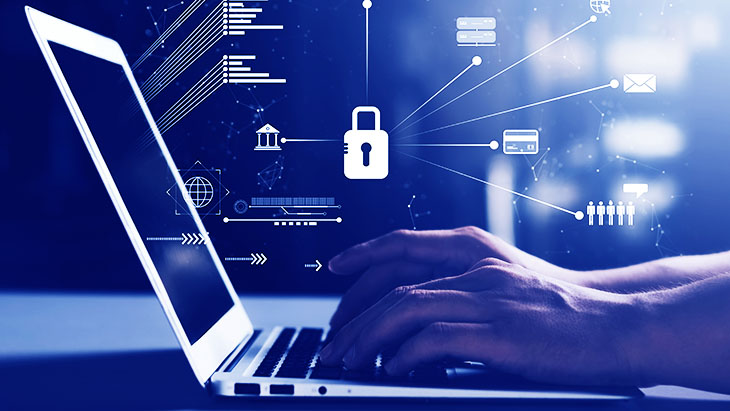
Securing Data Access: Best Practices for Data Protection | Tips & Solutions
Data is the lifeblood of modern business and plays a critical role in enabling companies to make informed decisions and maintain their competitive edge, spanning from customer information to financial records. But with great power comes great responsibility, and businesses need to take steps to secure their data access to prevent it from falling into the wrong hands.
In this article, we’ll explore best practices for securing data access, including:
- Implementing Access Controls
- Enforcing Strong Passwords
- Masking Data
- Regularly Monitoring and Auditing Access
- Using Multi-Factor Authentication
- Training Employees on Security Best Practices
- Limiting Access to Sensitive Data
- Backing Up Data
Implementing Access Controls
Access controls are the first line of defense against unauthorized data access. Access controls are responsible for regulating which individuals are permitted to access specific data and the actions they can take on it. Access controls can help guarantee that solely approved users are able to retrieve your data and that they are limited to accessing only the data necessary for their job.
Enforcing Strong Passwords
Strong passwords are essential for securing data access. Passwords should be complicated and consist of a combination of uppercase and lowercase letters, digits, and special characters. It's important to regularly alter your passwords and avoid using the same password for different accounts. By enforcing strong password policies, you can prevent unauthorized access to your data through brute force attacks or password guessing.
Masking Data
Masking is the process of converting original data into a modified content that can only be deciphered by authorized users. Masking is essential for securing data access because it makes it much harder for unauthorized users to access and use your original data. Data masking techniques include substitution, shuffling, and encryption to protect sensitive information.
Regularly Monitoring and Auditing Access
Regularly monitoring and auditing access to your data is essential for identifying and preventing unauthorized access. By keeping track of who is accessing your data and when, you can quickly identify any suspicious activity and take appropriate action. Auditing access also helps you stay compliant with regulatory requirements.
Using Multi-Factor Authentication
Multi-factor authentication provides supplementary levels of protection that compel users to provide several means of identification to gain access to data. Typically, this involves something the user knows, such as a password, and something the user has, such as a mobile phone, token or geo-location verification. Even if someone has gained access to a user's password, utilizing multi-factor authentication remains an effective method for preventing unauthorized access to your data.
Training Employees on Security Best Practices
The vulnerability of data security is often linked to employees, who can be considered as the weakest link. Training employees on security best practices can lower the possibility of data breaches that are a result of human error. The training should include topics such as password security, phishing awareness, and social engineering.
Limiting Access to Sensitive Data
Not all data is created equal. Some data, such as financial records or personal information, is more sensitive than others. By limiting access to sensitive data, you can reduce the risk of unauthorized access or data breaches. Access to sensitive data should be restricted to only those employees who need it to perform their job.
Backing Up Data
Finally, backing up data is essential for ensuring business continuity in the event of a data breach or loss. Regular backups should be taken and stored in a secure location to ensure that data can be recovered in the event of a disaster.
Protect Your Business and Customers by Securing Data Access
Securing data access is essential for protecting your business and its customers. By implementing the practices such as access controls, strong passwords, encryption, and regular monitoring, you can reduce the risk of data breaches and protect your business from costly data loss. By training employees on security best practices and limiting access to sensitive data, you can reduce the risk of human error and ensure that your data is handled securely. With the help of backing up your data regularly, you can ensure that your business can continue to operate in the event of a data breach or loss.
However, securing data access is an ongoing process that requires continuous evaluation and improvement. As technology and security threats evolve, so must your data security practices. Therefore, it's essential to stay up-to-date on the latest trends and best practices for securing data access.
Here are some additional tips for securing data access:
- Keep software and systems up-to-date with the latest security patches and updates.
- Conduct regular vulnerability assessments and penetration testing to identify potential weaknesses in your security infrastructure.
- Use firewalls and intrusion detection and prevention systems to monitor network traffic and identify suspicious activity.
- Limit the use of external devices, such as USB drives, to prevent unauthorized data transfer.
- Implement a data retention policy to ensure that data is not kept longer than necessary.
In conclusion, securing data access is critical for protecting your business and its customers from the costly consequences of data breaches and loss. Remember, securing data access is an ongoing process that requires continuous evaluation and improvement, so make sure to regularly assess your security infrastructure and adjust your practices accordingly. Securing data access can be effectively accomplished by utilizing Privileged Access Management (PAM) solutions as they are an invaluable resource for managing and monitoring access to critical systems and sensitive data. PAM solutions are designed to manage and monitor access to critical systems and sensitive data by authorized/privileged users, such as administrators or IT staff. PAM solutions provide additional layers of security by enforcing access controls, monitoring privileged user activity, and identifying potential security threats.
By implementing PAM solutions, businesses can gain greater visibility and control over privileged access, reducing the risk of data breaches and insider threats. Therefore, if your business relies on privileged users for managing critical systems and sensitive data, a PAM solution may be a valuable addition to your security infrastructure. If you're interested in learning more about how PAM solutions can benefit your business, don't hesitate to contact us for more information.













